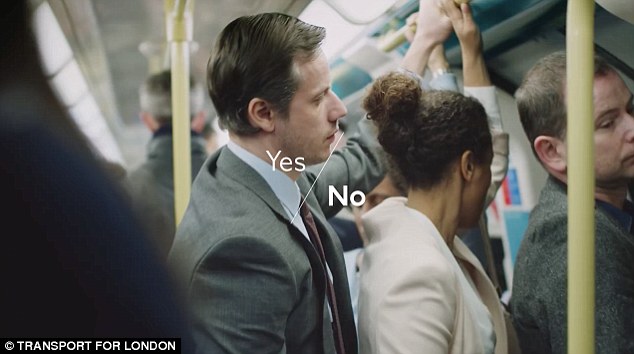Articles of this nature tend to be heavy on the opinion, sparse on the facts. So let’s start with the facts, shall we?
The Facts
- 15% of women and girls of all ages say they have been victims of unwanted sexual behaviour on London’s public transport network, according to a survey conducted by Transport for London. 90% of these victims did not report it.
- 31% of women aged 18-24 have experienced unwanted sexual attention while on public transport, according to a YouGov poll of 523 female Londoners. This drops to 24% for women aged 25-34.
- 5% of all women have experienced unwanted sexual touching while on public transport, with 14% reporting unwanted sexual attention in the past year.
- 32% of women say they have been verbally harassed on London’s transport network, with 19% being the victims of direct physical abuse, according to a joint poll between Thompson Reuters and YouGov.
Let’s be clear: the above statistics are awful and yet, are only the tip of the iceberg worldwide. The above numbers only for London, which was ranked among the best cities for women’s safety on public transport. In cities in Latin America and India, the problem is far worse.
The Case
Facts are important, because they give us numbers on which to hang our hats. But the reality for women on public transport in cities across the world cannot be adequately captured by a series of numbers. Reading any of the 80,000 stories compiled by the Everyday Sexism project, many thousands taking place on public transport, makes one’s stomach churn. Girls as young as twelve have been sexually assaulted on public transport, often by men many times their age. If you haven’t visited the page, do so and have a read.
There can really be only one ultimate solution for this kind of sexual harassment and assault: education and training of men from their youth to treat women decently, with respect for their bodily autonomy; not as objects for male sexual satisfaction. This should be understood clearly and unambiguously right from the get-go. Until men acknowledge that there is a systematic problem with their gender’s behaviour towards women, the statistics above are not going to change.
If that is the case then where do female-only train safe-spaces fit in? Some writers have described such measures as “segregation,” taking us “back to the victorian era” when such carriages were introduced, only to be abolished in 1977 under new Equalities legislation, which no longer permitted gender-specific provisions on transport. The suggestion of female-only carriages on trains by Labour leader Jeremy Corbyn, as safe-spaces that women can utilise – in addition to (obviously) being free to use carriages where men are also present – was ridiculed by many in the press as regressive, and evincing an unequal attitude between men and women.
Making women’s safety dependent on the behaviour of men is absurd. Women should have the right to take their safety into their own hands
Why should women have to change their behaviour to avoid sexual assault and harassment? The onus lies on men, surely, to check themselves and respect women’s bodily autonomy, no? Providing female-only safe-spaces would normalise sexual assault and send the message that if a woman doesn’t want to be sexually assaulted, she should hide herself away. It’s an affront to the majority of men too, that women should be hidden away because men are “too dangerous” to be around in public. It is unequal to have a space for women only, while men have no such space.
These are the arguments usually made against female-only train safe-spaces. And they have some validity to them, make no mistake. That’s for sure. But those who make such arguments are not appreciating a simple fact: Making women’s safety dependent on the behaviour of men is absurd. Women should have the right to take their safety into their own hands.
This is the most fundamentally important point. Issues of equality, normalisation of sexual assault etc., all have some validity. But the more pressing issue is: how do we ensure the safety and security of women in a way that puts the choice in their hands, and empowers them against male sexual aggression? Education of men to respect women’s bodily autonomy is the only true solution – absolutely. But that process doesn’t occur over night. It takes generations. It may take the same amount of time as that needed for the older generation, with their sexual attitudes and mores, to die off, and a younger generation, taught from cradle to grave to respect women, to replace them. In the meantime, what should we do about the fact that women across our cities are being sexually assaulted on public transport?
Are female-only safe spaces on public transport merely a sticking plaster, in light of the above statistics? Yes, absolutely. Is it a real, long-lasting solution? No, absolutely not. Only by changing male behaviour can this problem be truly eradicated. Will it be effective in securing safety for women, often travelling in cities late at night? Yes, most probably. Can other ways, such as clamping down hard on men who behave in this way, and providing a 24-hr hotline for women to report sexual abuse, also be utilised? Of course.
The question of female-only carriages is a question of priorities. Would you prefer to have women without recourse to a safe-space while travelling late at night, when approached, leered at, intimidated and even sexually assaulted, all in the name of “equality”? What “equality” can there be with the statistics above? What does it mean to speak of equality in such an unequal situation? Do 31% of men aged 18-24 also receive unwanted sexual attention? Are 5% of men also victims of sexual assault? There is already inequality in these statistics: women are the victims of male sexual aggression; men are not the victims of female sexual aggression.
When we talk about “equality” between the genders, what do we really mean? Is equality of sharing the same space a more significant gain in equal rights, than a society in which women are not overwhelmingly sexually abused more than men? Surely, if rates of sexual harassment of women was as low as the rates of sexual harassment as men, and that came at the “price” that women were offered safe spaces at night, or on routes known for sexual harassment, wouldn’t that be a gain for equality in the real sense of the word, in those terms that matter most?
To maintain the veneer of equality by claiming women-only carriages would undermine principles of egalitarianism, when the situation is that women are unequally and disproportionately the victims of male sexual aggression, is absurd.
To maintain the veneer of equality by claiming women-only carriages would undermine principles of egalitarianism, when the situation is that women are unequally and disproportionately the victims of male sexual aggression, is absurd. Inequality is already here.
What you do about it is what matters.











Reserve separate boxes like first three boxes of train only for women for freedom. Islam also talk about this bcz of these problems.
I suppose ‘real’ freedom and equality would be when women can choose the female only spaces on public transport or use the mixed one.
That would also give the authorities a chance to see which option the majority of women prefered…?
There are about 3-4 ladies couch in Malaysia KTM, while other couches are for both male and female. This allows the female the freedom to choose. However, male are restricted from female couch.
Let’s make whites only safe spaces on public transport. Do you like that idea? It’s no worse than women only safe spaces.